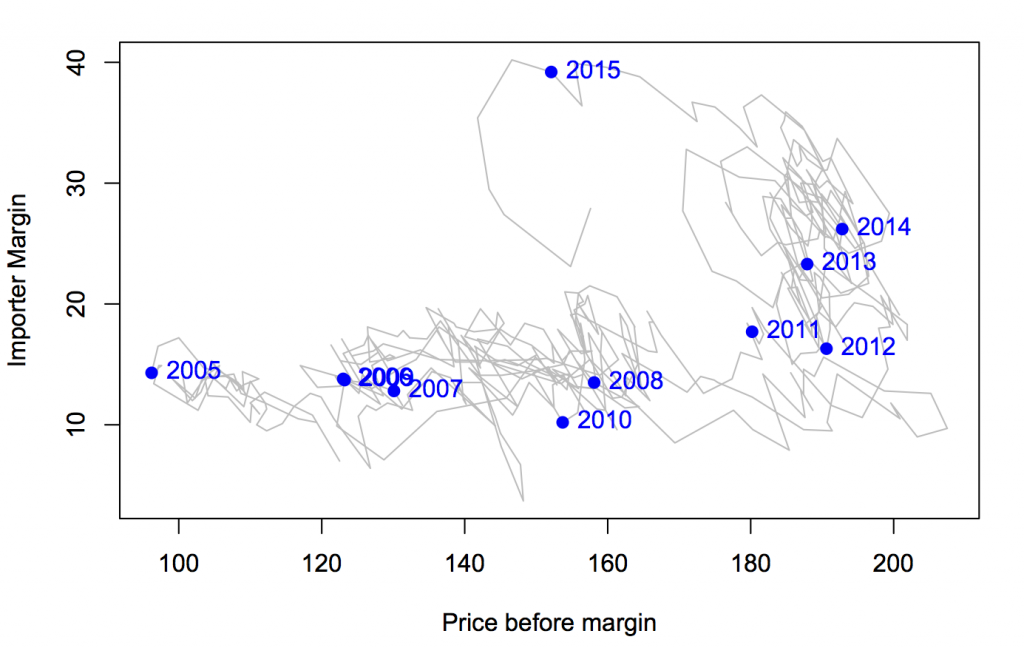Another interesting thing about petrol prices
or What I Did At Open Data Day.
The government monitoring data on petrol prices go back to 2004, and while they show their data as time series, there are other ways to look at it.
The horizontal axis is the estimated cost of imported petrol plus all the taxes and levies. The vertical axis is the rest of the petrol price: it covers the cost hauling the stuff around the country, the cost of running petrol stations, and profit for both petrol stations and companies.
There’s an obvious change in 2012. From 2005 to 2012, the importer margin varied around 15c/litre, more or less independent of the costs. From 2012, the importer margin started rising, without any big changes in costs.
Very recently, things changed again: the price of crude oil fell, with the importer margin staying roughly constant and the savings being passed on to consumers. Then the New Zealand dollar fell, and the importer margin has fallen — either the increased costs from the lower dollar are being absorbed by the vendors, or they have been hedged somehow.
Thomas Lumley (@tslumley) is Professor of Biostatistics at the University of Auckland. His research interests include semiparametric models, survey sampling, statistical computing, foundations of statistics, and whatever methodological problems his medical collaborators come up with. He also blogs at Biased and Inefficient See all posts by Thomas Lumley »

I heard that Andrew Little wanted a review of oil companies and how they controlled prices. He has perhaps forgotten that the labour party of the 80’s when Bob Tizard was minister of energy and their handling of deregulation. The general opinion of the trade was that a clause of divorcement was needed. Bob Tizard ignored this and when the regulation came into force the oil companies went out and bought all the larger service stations in order to maintain their market share, they then set other retailers with harsh supply contracts and closed smaller stations. The government then paid the oil companies to take over marsden point thus giving the oil companies total vertical integration from importing, to refining and finally to marketing. why should te labour party be complaining now.
9 years ago
Yes, if you follow the principle that political parties are estopped from ever trying to do anything about a problem they contributed to causing. Personally, I don’t.
9 years ago
MBIE monitoring data goes back to 1983:
http://www.med.govt.nz/sectors-industries/energy/pdf-docs-library/energy-data-and-modelling/data/prices.xlsx/view
Plot the real (2013 values) margins as a time series and you get a very different view of the long-term margin trend, with the anomaly being margins in the 2000s which were historically low. Margins in the 1980s were so high because they sold less fuel than today – but from twice as many outlets.
9 years ago
Thanks, I’ll have a look at that.
9 years ago